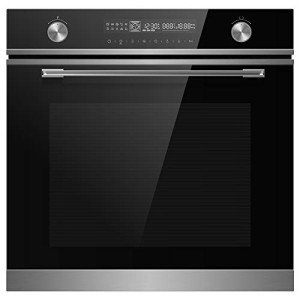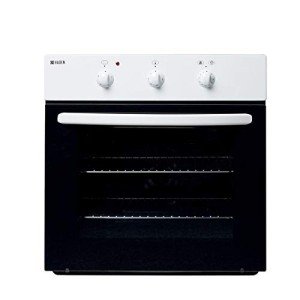
The kitchen is often referred to as the heart of the home, and for many homeowners, the design of this space is crucial for functionality and aesthetics. With the growing trend of modern kitchens, built-in appliances have become increasingly popular, particularly built-in ovens and microwaves. This article explores the various aspects of designing a kitchen with built-in ovens and microwaves, focusing on the benefits, considerations, and tips to optimize space and efficiency.
Advantages of Built-In Ovens and Microwaves
Incorporating built-in ovens and microwaves into kitchen design presents several advantages:

1. Space Efficiency
Built-in appliances are designed to fit seamlessly into cabinetry, conserving valuable counter space and helping to maintain an organized kitchen.
2. Aesthetic Appeal
These appliances provide a sleek, professional look that enhances the overall aesthetic of the kitchen. They can be customized to match cabinetry, creating a cohesive design.
3. Improved Functionality
Built-in ovens often feature larger capacities, allowing chefs to cook multiple dishes at once. Additionally, the microwave’s elevation can improve ease of use and accessibility.
4. Enhanced Safety
Built-in designs can eliminate the risks associated with traditional countertop appliances, such as accidental spills or tipping over.
5. Increased Home Value
Kitchens with modern built-in appliances tend to attract potential buyers, increasing property value.
Key Considerations When Designing a Kitchen with Built-In Appliances
When planning a kitchen renovation or new build, various factors need to be considered to ensure the successful incorporation of built-in ovens and microwaves:
1. Kitchen Layout
The overall layout of the kitchen plays a crucial role in the placement of appliances. Typical kitchen layouts include:
L-Shaped Layout: Effective for small and medium-sized kitchens, allowing for an efficient workflow between the sink, stove, and refrigerator.
U-Shaped Layout: Provides ample counter space for built-in appliances and allows for easy movement in the kitchen.
Island Layout: Integrates a kitchen island that can host built-in appliances and create a gathering space for family and friends.
2. Cabinetry Design
Built-in ovens and microwaves require specialized cabinetry:
Height Recommendations: Ideally, the bottom of the oven should be at eye level for ease of access, while microwaves can be installed at a convenient height above countertops.
Material and Finish: Select cabinetry materials that complement your kitchen’s overall design. Consider wood, laminate, or metal finishes.
3. Ventilation Needs
Effective ventilation is essential for built-in ovens. Ensure that your kitchen design incorporates a range hood or built-in ventilation system that complies with local safety codes.
4. Space Planning and Measurements
Before making any design decisions, accurate measurements are crucial. This includes:
- Depth and width of cabinetry.
- Space required for opening the oven door and microwave.
- Accessibility for electrical and ventilation connections.
5. Appliance Selection
Choose high-quality built-in appliances that suit your culinary style. Consider features such as:
intergrated ovens - click through the following web page,: Wall ovens, double ovens, convection options, and smart technology.
Microwaves: Over-the-range, built-in, or drawer-style microwaves.
Tips for Incorporating Built-In Ovens and Microwaves
Incorporating built-in ovens and microwaves into any kitchen is a design challenge that rewards thoughtful planning. Here are some useful tips:
Match Appliances and Finishes:
- Ensure that all built-in appliances embody a consistent design theme by mixing finishes and styles.
Lighting:
- Strategically placed task lighting enhances functionality and showcases the beauty of built-in appliances.
Avoid Heat Overlap:
- When positioning the built-in microwave, place it away from the oven to prevent heat damage.
Throw in a Kitchen Island:
- If space allows, incorporate a kitchen island with built-in appliances to promote cooking efficiency while providing additional storage and seating.
Integrate Smart Technology:
- Choose appliances with Wi-Fi connections to allow remote monitoring and control for added convenience.
A Comparison Table for Built-In Ovens and Microwaves
| Feature | Built-In Oven | Built-In Microwave |
|---|---|---|
| Installation Type | Wall-mounted or in cabinet | Wall-mounted, above-range, drawer-style |
| Cooking Capacity | Larger | Smaller |
| Cooking Options | Baking, broiling, roasting | Reheating, defrosting, basic meals |
| Smart Features | Yes | Yes |
| Ease of Accessibility | Eye level for ease of use | Adjustable based on installation height |
| Design Customization | High | Moderate |
Frequently Asked Questions (FAQs)
1. What’s the average cost of built-in ovens and microwaves?
The cost can vary widely based on brand, features, and craftsmanship. Expect to pay anywhere between £1,500 to £6,000 per appliance.
2. Can I install a built-in microwave under the counter?
Yes, many built-in microwaves are designed for under-counter installation. However, ensure proper ventilation is available and check your manufacturer’s guidelines.
3. What are the size requirements for built-in ovens and microwaves?
Size requirements vary by model. Generally, built-in ovens range from 24 to 30 inches in width, while built-in microwaves can range from 24 to 36 inches.
4. Do built-in appliances require special cabinetry?
Yes, built-in appliances typically require customized cabinetry designed to accommodate their dimensions and ensure proper installation.
5. Are built-in microwaves as powerful as countertop models?
While built-in microwaves often have similar wattage, countertop models may have larger capacity options. It’s essential to compare specifications while shopping.
In conclusion, designing a kitchen with built-in ovens and microwaves can transform the functionality and style of the space. By understanding the advantages, planning effectively, and selecting the right appliances, homeowners can create a kitchen that is both aesthetically pleasing and operationally efficient.







